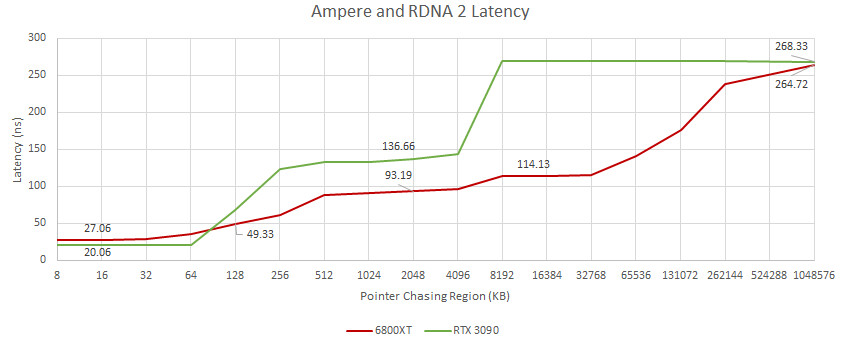DegustatoR
Legend
There may not be a "4090". We're missing the Titan in 30 series.
Lovelace in shorthand is lol? Or Lola?NVIDIA Ada AD102-107, Hopper GH100/202, Blackwell GB100/102 GPU confirmed?
It's not "Ada", it's Lovelace.
some more interesting tidbits..., these things are fastNVIDIA Ada AD102-107, Hopper GH100/202, Blackwell GB100/102 GPU confirmed?
It's not "Ada", it's Lovelace.
I love the way you can tell something in unreleased architecture is advantage over something else in another unreleased architectureMore news from the leaks, Ada features a massive L2 cache (16x Ampere)
https://videocardz.com/newz/geforce...ry-large-l2-caches-nvidias-own-infinity-cache
View attachment 6315
This large L2 cache is one factor of the big Ada RT performance boost (but not only). Current gen games BHV trees can fit in L2 where it's directly accessible at ultra low latency to the RT cores (big advantage vs L3 cache on RDNA3)
Finally, early AD102 samples are boosting at 2.4-2.5Ghz, which is another performance boost of Ada vs Ampere
L3 cache of RDNA 2 has lower latency than L2 cache of Ampere:This large L2 cache is one factor of the big Ada RT performance boost (but not only). Current gen games BHV trees can fit in L2 where it's directly accessible at ultra low latency to the RT cores (big advantage vs L3 cache on RDNA3)

L3 cache of RDNA 2 has lower latency than L2 cache of Ampere:

https://chipsandcheese.com/2021/04/16/measuring-gpu-memory-latency/
Even the revisited results prove, that L3 cache of RDNA 2 has lower latency than L2 cache of Ampere:That result is not valid since Chips&Cheese updated their test methodology and results.
See https://chipsandcheese.com/2021/05/13/gpu-memory-latencys-impact-and-updated-test/

Even the revisited results prove, that L3 cache of RDNA 2 has lower latency than L2 cache of Ampere:

More news from the leaks, Ada features a massive L2 cache (16x Ampere)
https://videocardz.com/newz/geforce...ry-large-l2-caches-nvidias-own-infinity-cache
View attachment 6315
This large L2 cache is one factor of the big Ada RT performance boost (but not only). Current gen games BHV trees can fit in L2 where it's directly accessible at ultra low latency to the RT cores (big advantage vs L3 cache on RDNA3)
Finally, early AD102 samples are boosting at 2.4-2.5Ghz, which is another performance boost of Ada vs Ampere
I'd expect very little about this processor to crossover with Lovelace. They've even gone back to naming them completely differently this time(unlike Ampere, which also had little in common with gaming Ampere).let's take it as some kind of preview
Nvidia Reveals Hopper H100 GPU With 80 Billion Transistors | Tom's Hardware (tomshardware.com)
It's not like Volta and Turing were world's apart because of the different namesI'd expect very little about this processor to crossover with Lovelace. They've even gone back to naming them completely differently this time(unlike Ampere, which also had little in common with gaming Ampere).
Why do you conclude that the difference is greater here? Is there a specific feature of the tensor cores or cache that you're referring to or is there something else?Lovelace seem to be more different from Hopper than either of the previous HPC only architectures were so
